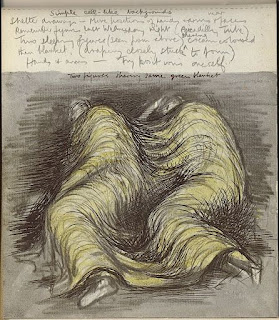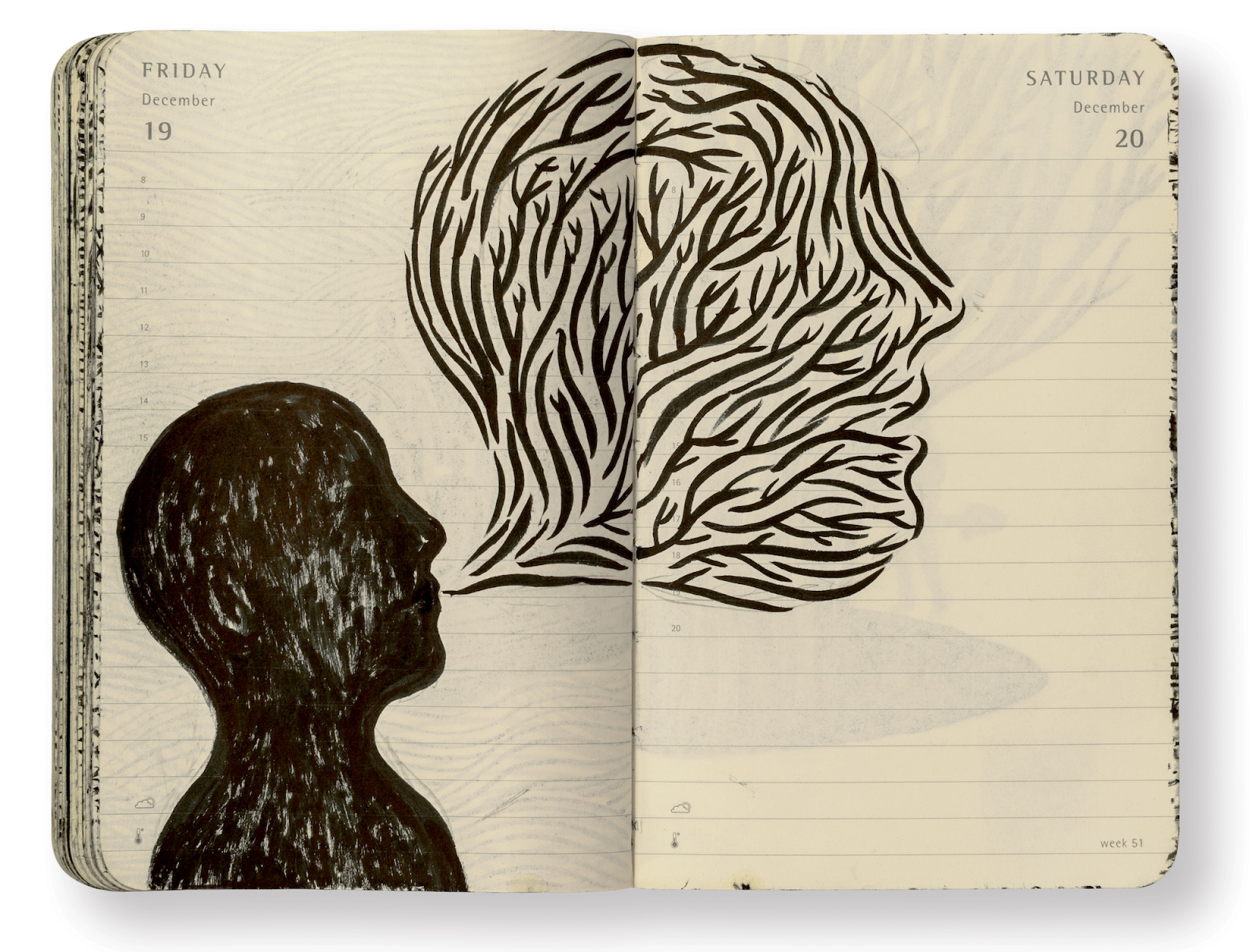Picasso
Ex LCA student Henry Moore's sketchbooks are not as wide ranging in approach as Picasso's but are similar in that they concentrate on solving visual ideas. However some sketchbooks are about finding ideas from direct observation and others about free form invention. The famous shelter or sheep sketchbooks are reflections on 3D form as much as they are records of observed events, once again we have an artist looking at the world and selecting out of it the information that supports their aesthetic vision.
Henry Moore
However many of Moore's sketchbooks are more like Picasso's, he is looking for a range of visual solutions to a problem and works images through as variations on a theme.
Henry Moore
As always there are alternative arguments and at first sight Edward Hopper's notebooks seem to suggest that he is writing to support his visual thinking, but when you read the text you realise these drawings are done after the event so to speak, they are documents of work done. The notebook as document of practice is something that has become more prevalent recently, as several artists have begun to use the document of practice as their actual practice. It is in Hopper's work I see the initial germ of this idea emerging.

Pep Carrió
Pep Carrió
Pep Carrió’s sketchbooks are stream of consciousness records of every day of his life. He never misses a day and his sketchbooks become the artwork itself, gradually building up a mass of images that have an impact simply because of the sustained invention that has now continued for years.
An alternative approach is that of Dieter Roth. He used the diary format to reflect on his life, interweaving selections from these diaries into his work, making almost direct translations from them and creating copybooks from them using Xerox. Each page becomes an intense interaction between word and image, he often used water soluble ink as he wrote so that when the paper was dampened ink would bleed and spread, the writing then becoming more visually akin to other types of mark making. At the same time as he made these diaries, alongside them he was collecting every piece of waste less than 1cm thick that he encountered every day in the studio, preserving it in a plastic folder and compiling these into ring binders. His everyday thoughts are collected alongside everyday detritus. A concept that I think is very interesting, artists' jottings being valued as much as the dirt and rubbish on the studio floor. This is almost in direct opposition to Picasso who values every page, signing and dating his work as he proceeds, as he obviously believed that at some point in time researchers would value his work so highly that they would want to be able to follow his thinking in sequential detail.
Roth diary pages
Roth daily collection file pages
Dieter Roth: vitrine of notebooks
Dieter Roth
Sketchbook links of interest:
Using sketchbooks to think with
An earlier post on Richard Diebenkorn's sketchbooks.
An earlier post on Richard Diebenkorn's sketchbooks.
Frances Alys sketchbooks
Sketch Open
Lucy Lyons makes sketchbooks the focus for her practice
Sketch the exhibition
My own way of using a sketchbook. Tracking the evolution of an idea.
Sketch Open
Lucy Lyons makes sketchbooks the focus for her practice
Sketch the exhibition
My own way of using a sketchbook. Tracking the evolution of an idea.
If you want to follow the thread about documentation the best thing to do is click this link to
Documentation as Art Practice in the 1960s by Christian Berger and Jessica Santone, for an excellent PDF on the subject.























waue, great
ReplyDelete